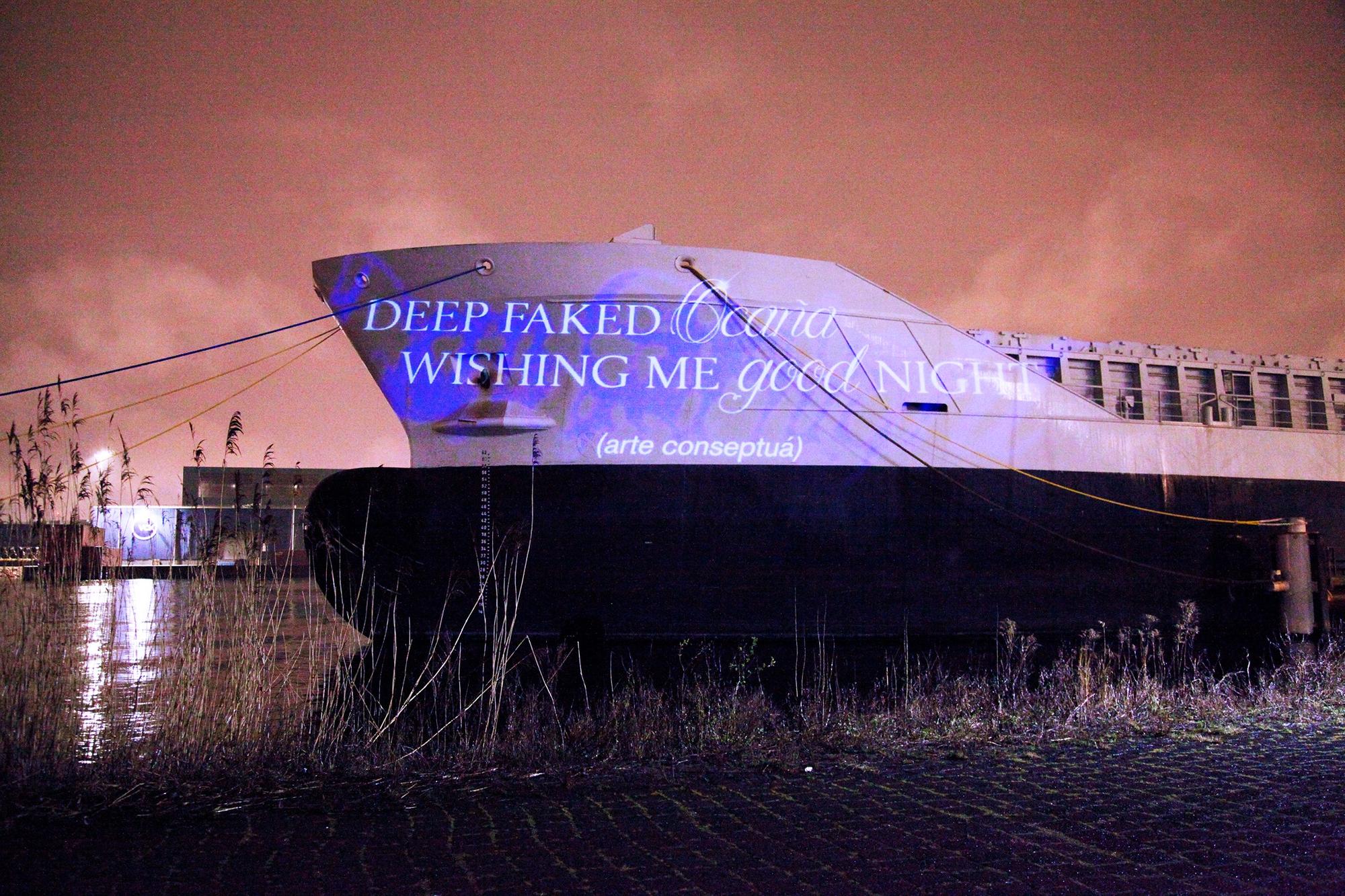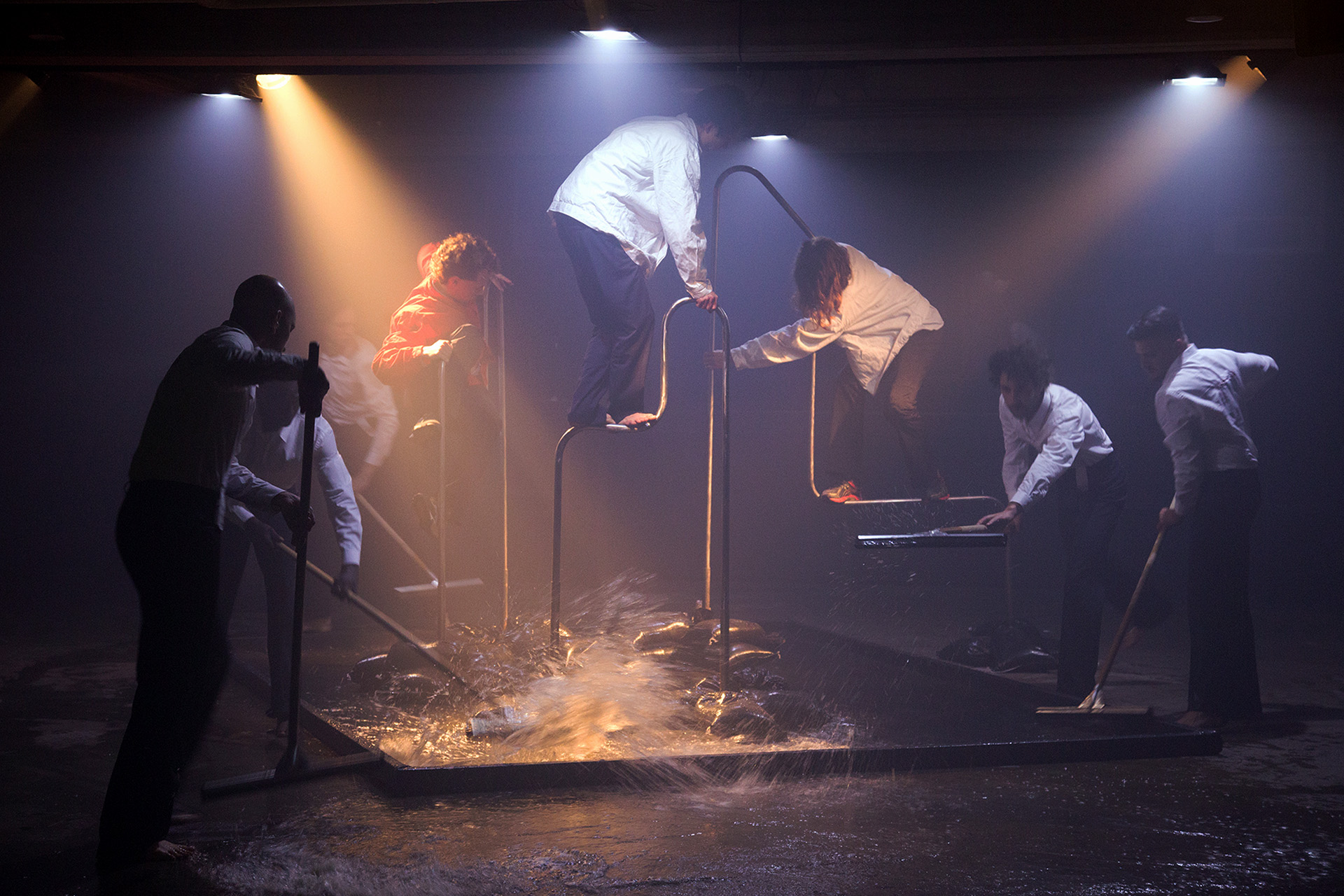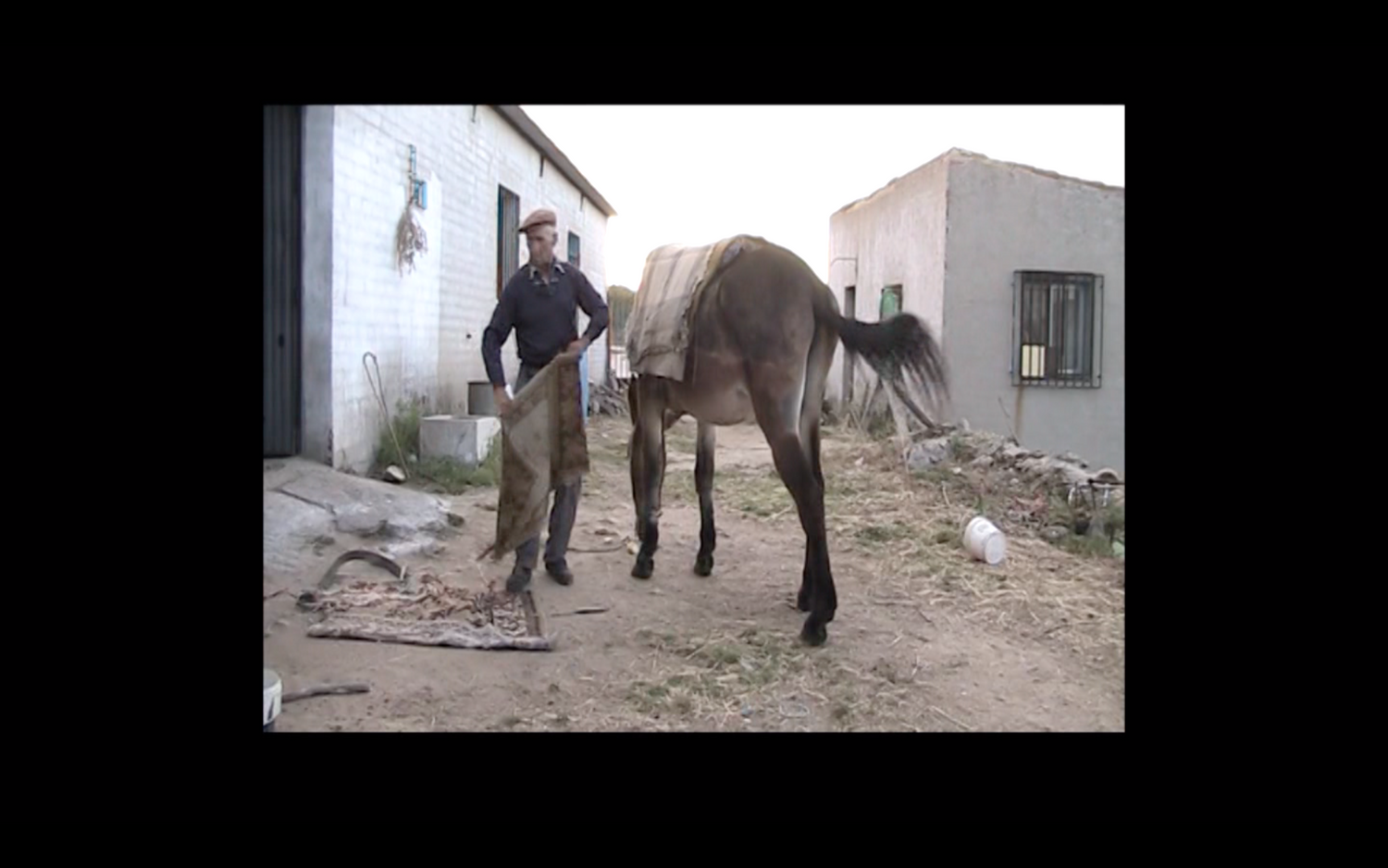[What led you to choose performance as your medium of expression rather than another form of art?]
I studied a BA in Fine Arts at a traditional academic university. The approach to art there was very much about mastering different techniques, which I wasn’t particularly interested in. So, I started researching performance art and exploring mediums involving the body, including photography. I delved into photography through self-portraits, and eventually, the performativity inherent in that medium took over. I then shifted my focus to actions and images, which gradually became my primary – though not exclusive – medium.
Another factor was the practicality of the practice. I never had a studio until this very month! Performance became a medium that allowed me to develop ideas within my room. My approach was very minimal in terms of production, focusing on actions with one or two accessible objects, without lights, sound, or complex setups.

Acción con Monedas I. performance 3h, Acción!MAD Festival, Matadero Madrid 2016
[What role does the audience play for you?]
In my early works, I focused on long-duration performances, often presented during events where other activities were happening simultaneously. This created a specific dynamic where the audience could engage with the work intermittently.
Now, my practice has evolved towards a more narrative form, where I request the audience’s attention within a specific time frame. In my performance practice, I hold great respect for the audience. I see my work as an offering - something I present to them. It could be emotional, contemplative, entertaining, or thought-provoking. Ultimately, the interpretation is up to the audience.
[In your work, you explore themes of identity from a social and cultural perspective, always through a personal lens. Could you share your thoughts and the urgency that drives you to address these themes through art?]
I’ve always been interested in identity, society, culture, and politics. Earlier in my career, my work was inspired by the context I lived in - specifically the 2008 economic crisis in Spain. During that period, my work was conceptually explicit, directly responding to the socio-economic situation, with little emphasis on personal elements.
In the past 5–6 years, I’ve approached similar themes through a more personal lens, addressing topics like class, politics, and social justice intertwined with personal experiences of love, belonging, and care.
For me, addressing these themes in my practice is a way to respond to and reflect on the current political and social context and how it intersects with my own personal challenges.

Deepfaked Ocaña Wishing Me Goodnight, 2021. A project of Lucía Vives and Eloy Cruz del Prado for Rietveld UnCut. Graphics by Tomás Queiroz, mastering by Maja Chiara Faber.
Deepfaked Ocaña Wishing Me Goodnight
rietvelduncut.rietveldacademie.nl
[In your opinion, what is the role of the artist in society today? What is the purpose of art today?]
The role of the artist in society today has multiple answers. Artists fulfill many roles with diverse intentions and purposes.
For me, art and culture have the capacity to bring people together, and that is immensely powerful. It’s also why art and culture are often repressed when a specific narrative seeks to dominate.
[What is your relationship with the art world/system?]
I believe there are many art worlds and systems. I have a positive and stimulating relationship with aspects like art schools, residency networks, and local art scenes. However, when it comes to art fairs, the market, and questions of value, my relationship is more complicated.
I don’t (yet?) live off my practice, which impacts my creative process since finding a way to sustain myself financially is essential. This has led to a desire to enter spheres like the art market and academia - not only for financial stability but also for the validation they offer. This ambition ties back to my roots as an aspirational working-class kid.
In resume, It’s a complicated relationship 🙂

HUNDRED SECONDS LONGER AND ITS OVER. LOOKING FOR REAL? FOR REAL. Cállate, que menudo polvo echaron tus padres para tenerte. THERE IS NO LOVE, BUT I CALL THEM LOVERS. CARETAKER. HEART-SHAPED PIGGY BANK
[How do you envision – or how would you like – the art system of the future to be?]
The future feels incredibly uncertain these days... I would like an art system that doesn’t censor artists who speak out against genocide and imperialism. I’d like to see a system where the primary value of art isn’t its price but its capacity to inspire, provoke thought, move people, and resist oppressive forces.
[Which past or present artists, from various fields, have influenced or continue to influence your work?]
I’ve been inspired by many artists, and they’ve likely influenced my work in different ways. The artists I feel most connected to often share traits such as the physical intensity of their pieces, monumentality in some cases, and narrative or thematic depth. These include visual artists, musicians, drag queens, and writers. Notable names include Félix González-Torres, Matthew Barney, Francesca Woodman, Jean Genet, and Arca.
[Can you tell me about your work series Good Job, Good Boy and, specifically, the performance you’ll be presenting at the Performatorio? How did it come about, and why?]
With "Good Job, Good Boy I", I started reflecting on labor, something I had previously explored during my BA studies, but this time it was intertwined with themes of love, sexuality, and gender. "Good Job, Good Boy II (sketches I-VI) were the first formal manifestations of this series and remain a work in progress. However, "Good Job, Good Boy II" is actually the first fully developed piece in the series.
After graduation, labor and even professional careers became an important and weighty topic for me. My previous work, "Hundred Seconds Longer and It's Over", explored the role of resistance in the development of love, sexuality, and care. I wanted to understand how labor intersects with our sense of belonging or validation, and what role it plays in love or affection.
There were two elements I wanted to incorporate, not necessarily together: footage of my grandfather working in the countryside, and the castañuelas, the folkloric instrument I played when I was part of the folkloric dance group in Cenicientos. I began exploring the possibilities of combining these elements with movement and text.
Eventually, I found a narrative in the clip I selected from the documentary, which presents two characters: my grandfather and the mule that appears in the video. Ultimately, I connect the narrative of these three characters –the grandfather, the mule, and myself – in how labor becomes a shared tool for validation that all three of us use.

From Dawn to Dusk, video
I am also exploring the possible forms this work or research can take, with a material approach such as drawings, sculptures, or installations. More to come soon.
(Cover photo © Carmen Gray)
VIA G.B. MORONI 177
24127 BERGAMO
P.IVA 04712920166